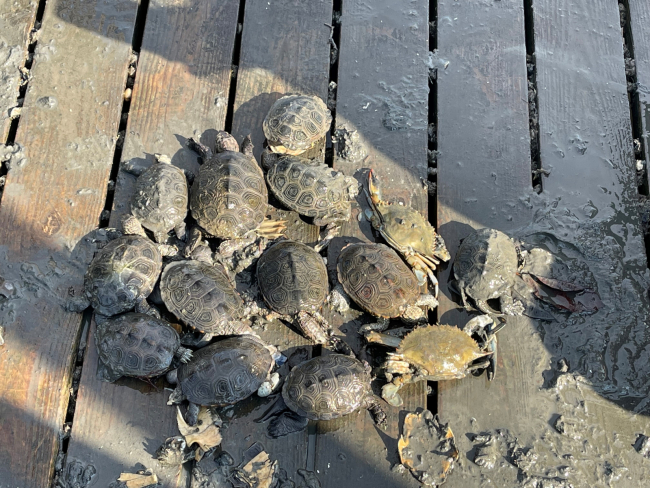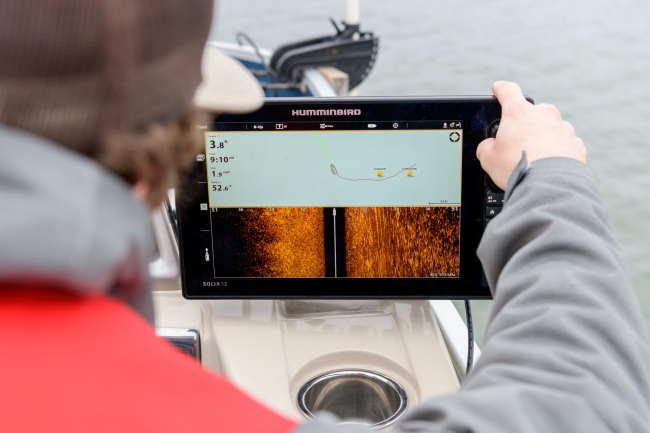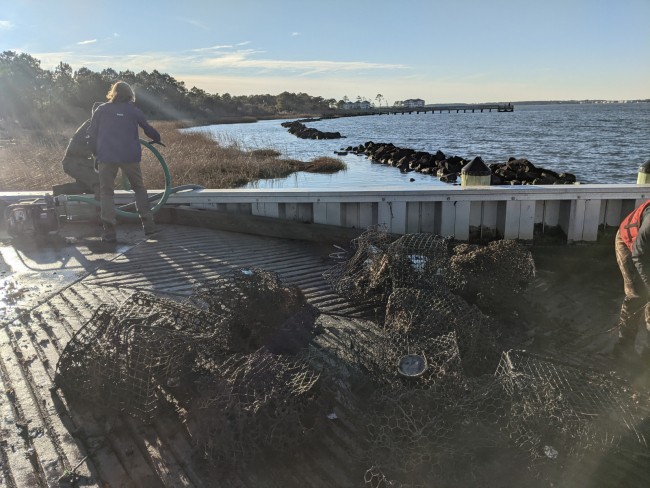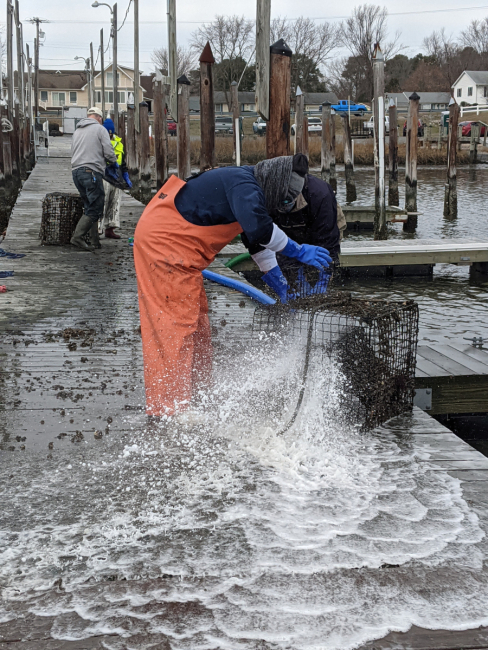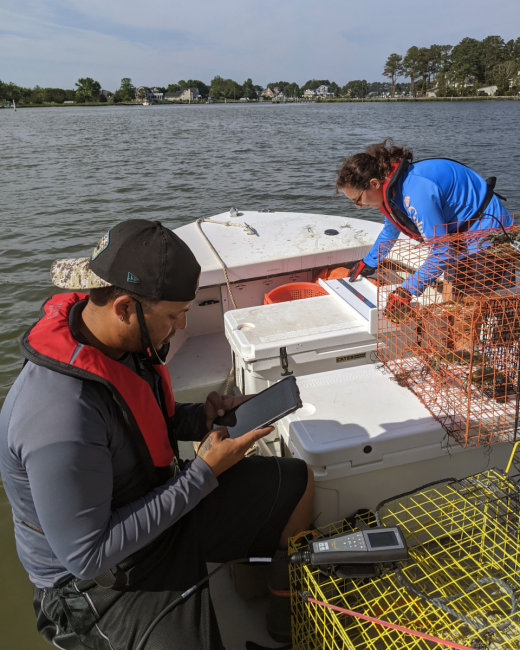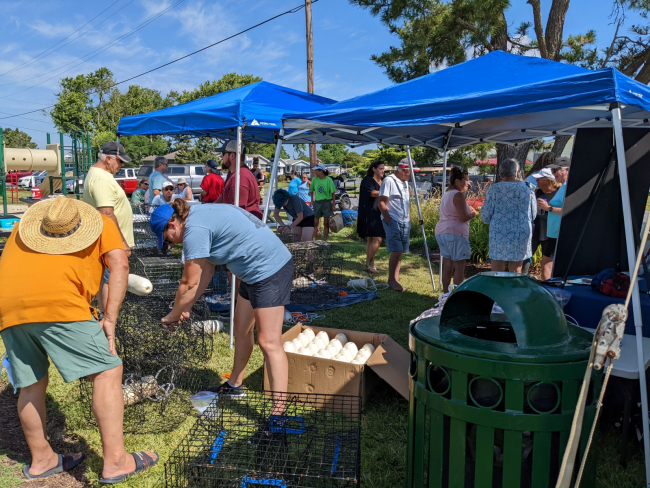Guest blog by: Kate Fleming, Coastal Ecology Specialist, Delaware Sea Grant; Dr. Ed Hale, Assistant Professor, University of Delaware-Delaware Sea Grant; and Dr. Art Trembanis, Professor, University of Delaware.
The shallow, protected habitats of Delaware’s Inland Bays make for one of the most popular areas in the state for residents and tourists to try their hands at catching blue crabs. In boats or on the shore, recreational crabbers use all kinds of gear, from hand lines, to trot lines, to small traps with collapsible sides, and the Chesapeake style crab pot. Unfortunately, thousands of derelict crab pots have been left behind or lost, and are littered beneath the surface of the Inland Bays, continually trapping blue crabs, diamondback terrapins, and other local species.
The University of Delaware and Delaware Sea Grant, with funding from the NOAA Marine Debris Program, worked to address the issue by teaming up with recreational crabbers to remove derelict pots. Our team organized “round-up” days that would take place during the closed blue crab winter season, and recruited a dedicated group of volunteers who could bring and crew their own boats, were willing to get it incredibly dirty, and were willing to work in the middle of winter. Prior to volunteer registration, we hosted virtual information sessions to ensure folks knew what they were getting into.
In advance of volunteer round-up days, the University of Delaware’s Coastal Sediments, Hydrodynamics, and Engineering Lab (CSHEL) conducted comprehensive sonar mapping surveys of our target areas. The mapping data provided important information needed to plan round-up events and calculate annual trap accumulation rates. Using this data, CSHEL graduate students struck out prior to volunteer boat teams on round-up days, in a small fleet of shallow draft boats outfitted with side-imaging fish-finders. They used the sonar mapping data to locate derelict crab pots and mark them with a buoy.
Next, volunteer boat teams set out to grapple marked crab pots, haul them into their boats, rid them of sediment, release any wildlife, record data, and transport the recovered pots to shore. On shore, partners from Delaware Fish and Wildlife and the Delaware Center for the Inland Bays worked with volunteers to rinse, weigh, and sort pots for various recycling uses. Over two winter removal seasons, four round-up days were held with 49 volunteers, removing over 3,000 pounds of debris from the Inland Bays.
Following the round-ups, we piloted “Crab Trap Checks'' outreach events in five Inland Bay recreational crabbing communities. At each event, residents were invited to bring their crab pots to be assessed and updated with supplies for responsible crabbing. A few derelict crab pots were also refurbished on site and were later used as prizes in derelict crab pot-related outreach exhibits.
In addition to volunteer rounds-ups and mapping the floor of the Inland Bays, we set out to evaluate the catch and bycatch of recreational fishing over a one-month period for two years during the summer. Our preliminary study findings suggest that derelict fishing gear reduces total catch of blue crabs in a recreational fishery. Further, active and derelict fishing gear was found to also trap and kill non-target wildlife. This finding is especially concerning for vulnerable species, such as Diamondback Terrapins.
Although this project accomplished a great deal, more work remains to remove derelict gear from Delaware’s Inland Bays. Our hope is to continue volunteer removal efforts moving forward, while working with communities to prevent future gear loss.

